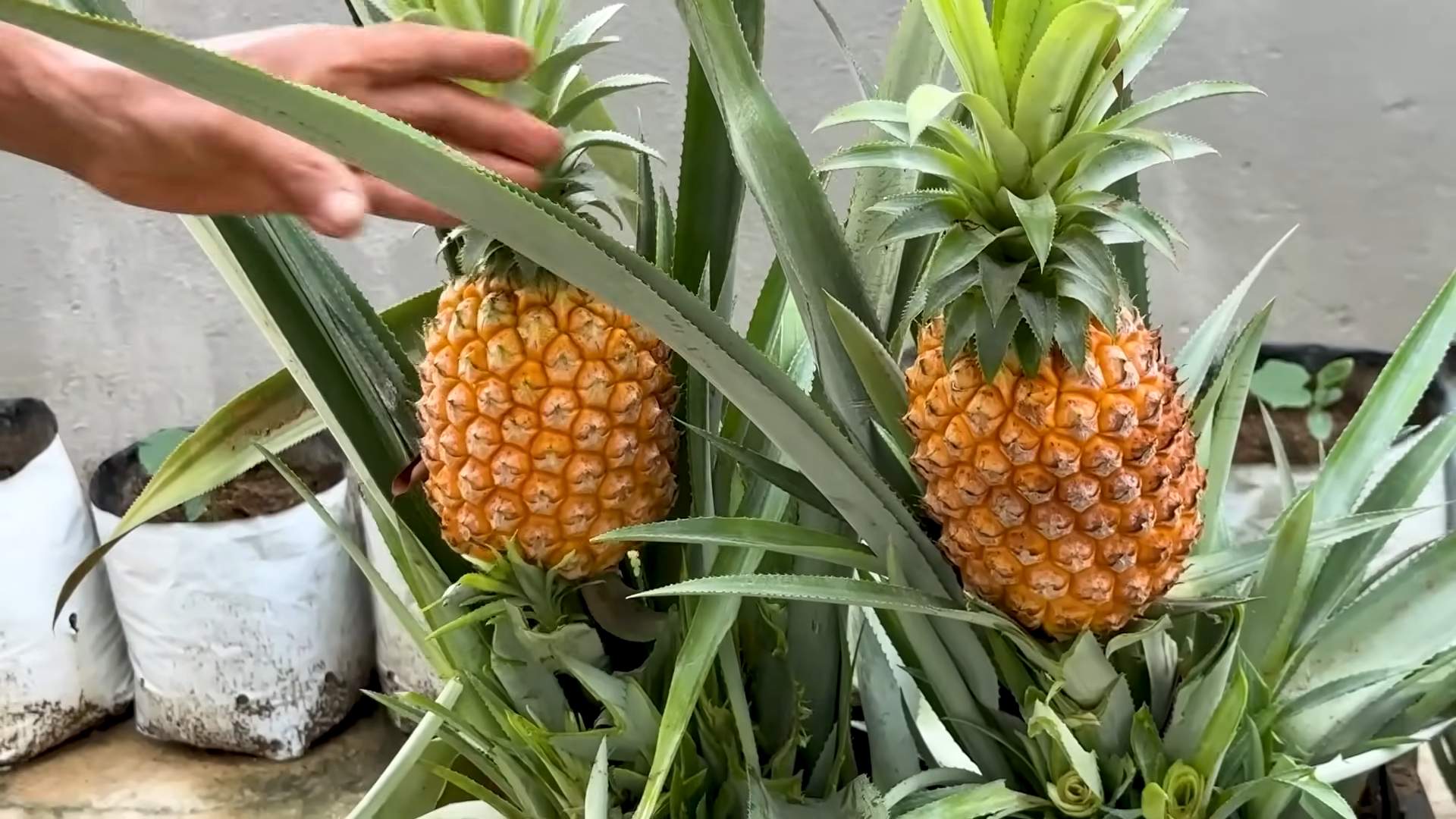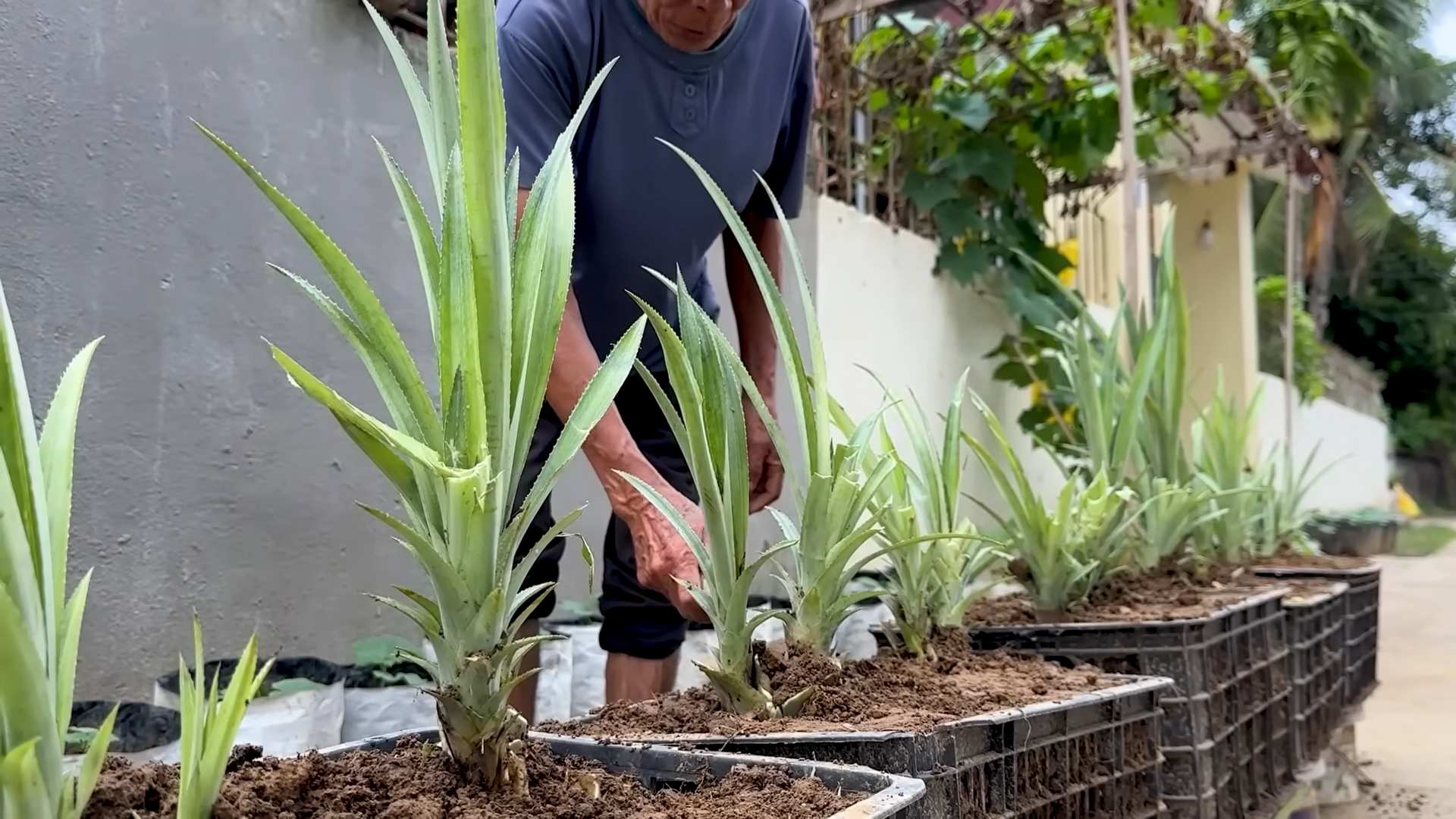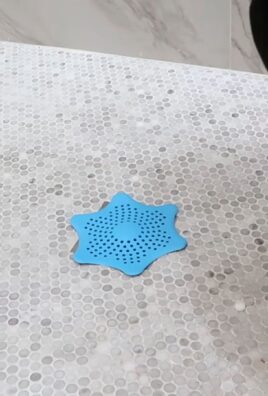Home Pineapple Farming: Grow Your Own Tropical Delight
Home pineapple farming might sound exotic, but it’s surprisingly achievable, even if you don’t live in a tropical climate! I’ve always been fascinated by the unique way pineapples grow, and the delicious, juicy fruit they produce. Historically, pineapples were a symbol of luxury and hospitality, prized for their exquisite taste and difficult cultivation. Now, thanks to some clever home gardening tricks, you can experience the joy of harvesting your own pineapples right in your backyard or even on your windowsill.
This article is your guide to mastering the art of home pineapple farming. Forget expensive grocery store prices and enjoy the freshest, most flavorful pineapples imaginable, grown with your own two hands. Why bother? Because there’s nothing quite like biting into a sun-ripened pineapple you nurtured from a simple crown. The satisfaction is unparalleled, and the taste? Well, let’s just say it’s a world away from anything you’ve bought in a store.
Why This DIY Approach Matters
Growing your own pineapples allows you to control the entire process, from selecting the perfect crown to harvesting the mature fruit. You’ll learn about the plant’s specific needs, ensuring optimal growth and a bountiful harvest. Plus, it’s a rewarding experience for the whole family, teaching valuable lessons about patience, nature, and the magic of home gardening. This comprehensive guide on home pineapple farming will equip you with the knowledge and confidence to embark on this exciting journey.

Growing Pineapples at Home: A DIY Guide
I’ve always loved the taste of fresh pineapple, but the price at the grocery store can be a bit steep. So, I decided to try growing my own! It’s surprisingly easy, and the satisfaction of harvesting your own fruit is incredible. Here’s how I did it, and how you can too.
Choosing Your Pineapple Top
- Select a ripe pineapple: Don’t use a pineapple that’s overly ripe or bruised. Look for one that’s firm and fragrant, indicating it’s at its peak ripeness. This will give your cutting the best chance of success.
- Cut the crown: Carefully cut off the crown, ensuring you get about 1-2 inches of the fruit attached to the base of the leaves. This provides a good source of nutrients for the initial rooting process.
- Remove lower leaves: Gently remove the lower leaves until you expose about 1-2 inches of the stem. This will allow the stem to be submerged in water during the rooting process without rotting.
- Clean the crown: Rinse the crown thoroughly under cool water to remove any remaining fruit pulp or debris. This helps prevent rot and fungal growth.
Rooting the Pineapple Top
- Prepare the water: Fill a clean glass or jar with lukewarm water. Change the water every 2-3 days to prevent bacterial growth and keep it fresh. This is crucial for preventing rot.
- Submerge the stem: Place the pineapple top in the jar, ensuring only the exposed stem is submerged in the water. The leaves should remain above the waterline.
- Place in a sunny spot: Position the jar in a location that receives bright, indirect sunlight. Avoid direct sunlight, which can scorch the leaves.
- Monitor root growth: After a few weeks, you should start to see small roots emerging from the base of the stem. This can take anywhere from 4-8 weeks, depending on the conditions and the pineapple variety.
- Patience is key: Don’t get discouraged if it takes a while. Root development can be slow, but as long as the leaves remain green and healthy, your pineapple top is likely doing fine.
Planting Your Rooted Pineapple
- Prepare the soil: Use a well-draining potting mix. A mix of potting soil, perlite, and peat moss works well. Good drainage is essential to prevent root rot.
- Select a pot: Choose a pot that’s at least 12 inches in diameter and has drainage holes. A larger pot will give your pineapple plant more room to grow.
- Plant the pineapple: Once the roots are about 1-2 inches long, carefully plant the pineapple top in the prepared potting mix. Bury the stem up to the base of the leaves.
- Water thoroughly: Water the soil gently but thoroughly after planting. Allow excess water to drain completely.
- Provide sunlight: Place the potted pineapple in a location that receives at least 6-8 hours of sunlight per day. A south-facing window is ideal.
Ongoing Care and Maintenance
- Watering: Water the pineapple regularly, keeping the soil consistently moist but not waterlogged. Allow the top inch of soil to dry out slightly between waterings.
- Fertilizing: Fertilize your pineapple plant every 2-3 weeks during the growing season (spring and summer) using a balanced liquid fertilizer diluted to half strength. Reduce fertilizing in the fall and winter.
- Pest and disease control: Regularly inspect your pineapple plant for pests and diseases. Treat any infestations promptly using appropriate organic pest control methods.
- Temperature and humidity: Pineapples prefer warm temperatures (70-80°F) and high humidity. Consider using a humidifier if the air in your home is dry.
- Patience: Remember that pineapples are slow-growing plants. It can take 2-3 years, or even longer, for your pineapple plant to produce fruit. Be patient and enjoy the process!
Troubleshooting
Yellowing Leaves:
Yellowing leaves can indicate overwatering, underwatering, or nutrient deficiencies. Adjust your watering schedule and consider fertilizing your plant.
Brown Leaf Tips:
Brown leaf tips are often a sign of low humidity or salt buildup in the soil. Increase humidity or flush the soil with water to remove excess salts.
Slow Growth:
Slow growth can be due to insufficient sunlight, inadequate nutrients, or improper watering. Ensure your plant receives enough sunlight, fertilize regularly, and maintain proper watering practices.
Root Rot:
Root rot is a serious problem that can kill your pineapple plant. Ensure good drainage and avoid overwatering. If root rot is suspected, repot the plant in fresh, well-draining soil.
By following these steps, you’ll be well on your way to enjoying the sweet taste of homegrown pineapples. It’s a rewarding experience, and the fruit tastes even better knowing you grew it yourself!

Conclusion
So there you have it – your comprehensive guide to home pineapple farming! This isn’t just another gardening project; it’s a journey of discovery, a testament to patience, and a rewarding experience that culminates in the sweet, juicy taste of a pineapple you grew yourself. Home pineapple farming offers a unique blend of challenge and satisfaction, transforming a seemingly exotic fruit into an achievable backyard project. The process, while requiring attention to detail, is surprisingly straightforward, making it accessible to both seasoned gardeners and enthusiastic beginners alike. The sense of accomplishment in harvesting your own pineapple, knowing the care and dedication you poured into its growth, is unparalleled. Beyond the delicious fruit, you’ll gain a deeper appreciation for the natural world and the fascinating process of plant cultivation.
Beyond the basic method outlined, there are numerous avenues for experimentation and customization. Consider different varieties of pineapple for a wider range of flavors and textures. Some varieties are better suited to specific climates, so research is key to selecting the perfect fit for your region. You can also explore different growing mediums, experimenting with variations in soil composition or even hydroponic techniques for a more controlled environment. For those with limited space, consider growing your pineapple in containers, adapting the size and type of container to suit your available area. Remember, the beauty of home pineapple farming lies in its adaptability; feel free to tailor the process to your specific circumstances and preferences.
Don’t be intimidated by the prospect of growing your own pineapple. With a little patience, the right conditions, and a dash of enthusiasm, you can successfully cultivate this tropical delight in your own home. We strongly encourage you to embark on this rewarding adventure. Share your experiences, both the triumphs and the challenges, with us and the wider community. Post pictures of your thriving pineapple plants and your delicious harvests on social media, using the hashtag #HomePineappleFarming. Let’s build a supportive network of home pineapple growers, sharing tips, tricks, and celebrating our collective successes. The journey of home pineapple farming is as much about the community as it is about the fruit itself. Join us, and let’s grow together! We can’t wait to see your results!
Frequently Asked Questions
What type of pineapple is best for home growing?
While many pineapple varieties can be grown at home, Smooth Cayenne is a popular choice due to its relatively easy cultivation and consistent fruit production. However, the best variety for you will depend on your climate and growing conditions. Research different varieties to find one that thrives in your specific environment.
How much sunlight does a pineapple plant need?
Pineapple plants require ample sunlight, ideally at least 6-8 hours of direct sunlight per day. Insufficient sunlight can lead to poor growth and reduced fruit production. If you’re growing indoors, consider using grow lights to supplement natural sunlight.
What kind of soil is best for growing pineapples?
Pineapples prefer well-draining soil that is slightly acidic (pH 5.5-6.5). A mixture of potting soil, perlite, and peat moss can create an ideal growing medium. Ensure the soil is rich in organic matter to provide essential nutrients.
How long does it take for a pineapple to mature?
The time it takes for a pineapple to mature from planting a crown to harvesting the fruit can range from 2 to 3 years, depending on the variety, growing conditions, and care provided. Patience is key!
What are the common problems encountered in home pineapple farming?
Common problems include insufficient sunlight, improper watering (both overwatering and underwatering), nutrient deficiencies, and pest infestations. Regular monitoring and prompt attention to these issues are crucial for successful cultivation. Research common pineapple pests and diseases in your region to be prepared for potential problems.
Can I grow a pineapple from a store-bought pineapple top?
Yes! This is a common and effective method for propagating pineapple plants. However, ensure the crown is healthy and free from disease before planting. Proper preparation and care are essential for successful propagation from a store-bought pineapple top.
What are the signs of a ripe pineapple?
A ripe pineapple will have a sweet aroma, a slightly soft texture when gently pressed, and its leaves will pull out easily. Avoid pineapples that are hard or have bruises or blemishes.
What can I do with the pineapple leaves after harvesting?
Pineapple leaves can be composted to enrich your soil or used in various crafts. They also have some medicinal properties, though research should be done before using them for medicinal purposes.
Is it possible to grow pineapples in colder climates?
While pineapples are tropical plants, they can be grown in colder climates with the use of greenhouses or indoor growing setups. You’ll need to provide supplemental heat and light to mimic their natural environment.
Where can I find more information about home pineapple farming?
Numerous online resources, gardening books, and community forums offer valuable information and support for home pineapple farming. Don’t hesitate to seek advice from experienced gardeners or join online communities dedicated to home gardening.




Leave a Comment